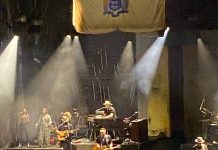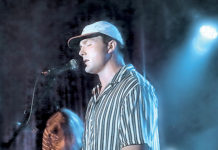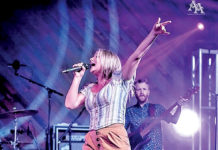But this is far more than the story of a horse. It is a powerful statement against violence of any kind, especially the barbarism of war.
by Joan Ellis

Animal people (you know who you are) may have a hard time watching the beautiful horse Joey as he serves in the British army during World War I. In addition, many who have seen War Horse, the Broadway play, found magic there that rules the movie out for them. But this is far more than the story of a horse. It is a powerful statement against violence of any kind, especially the barbarism of war. What I hadn’t counted on was that War Horse would be profoundly disturbing simply because it is so beautifully made.
Watching Joey’s journey from the hands of the boy who raised him through the battlefields and barbed wire of war is greatly moving, especially when animal lovers among the soldiers on both sides reach out to protect him. We appreciate Steven Spielberg’s camera, John Williams’ music, and the performers who create the characters who brave trouble and death to respond to Joey. Among them are Peter Mullan, Emily Watson and Jeremy Irvine as Joey’s farm family, and Tom Hiddleston, Benedict Cumberbatch, and Niels Arestrup who help Joey after he is sold to the army.
Several stretches of sentimentality in the film offer welcome respites from the battlefield slaughter. For a few minutes, we can breathe, and we need to. The bloodshed here is essential to the essence of the story – the innocence of the young men and their horses in wars that are man’s traditional solution to disputes.
There is one scene that comes as nearly a physical blow, its power a credit to director Spielberg. Horses and their riders are lined up across a vast field. The commander orders them to draw their swords, which they do as one. Then the order comes to extend the arm and sword forward, again as one, and to charge. Across the lovely field these several hundred horses and men charge, unknowing and armed with civil war weapons, into carefully placed nests of Germans with their new weapons: machine guns. The idiocy of swords vs. machine guns brings a gasp of anguish from the audience as Spielberg pulls the camera back to reveal the field littered with the bodies of men and their horses. He has reminded us of the generational folly of weapons and war – always new weaponry, always young men who die under its force.
The overwhelming credit for creating the credible on-screen carnage with superb action scenes belongs to Steven Spielberg. Hundreds worked on the film, but his vision makes it soul searing. He has taken a visceral look at war and death and random cruelty. The story gives him a broad canvas for his compassion for victims – human and animal alike. The only consolation? Horses like the beautiful Joey are no longer needed as weapons of war.
To the people who say to me “Tell me the ending or I won’t go,” I can only say that the ending is breathtaking. It’s OK, just go.
Rated PG-13














